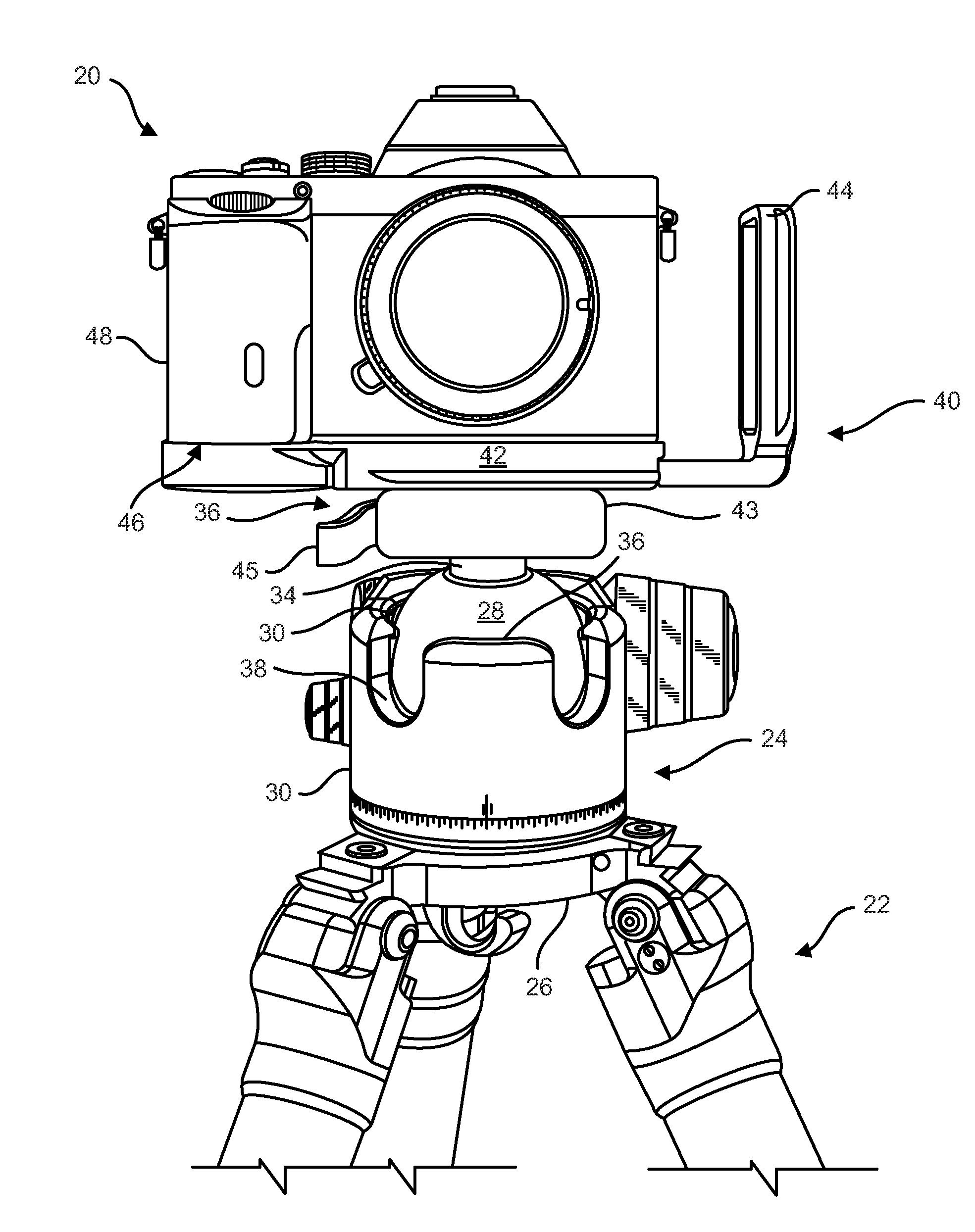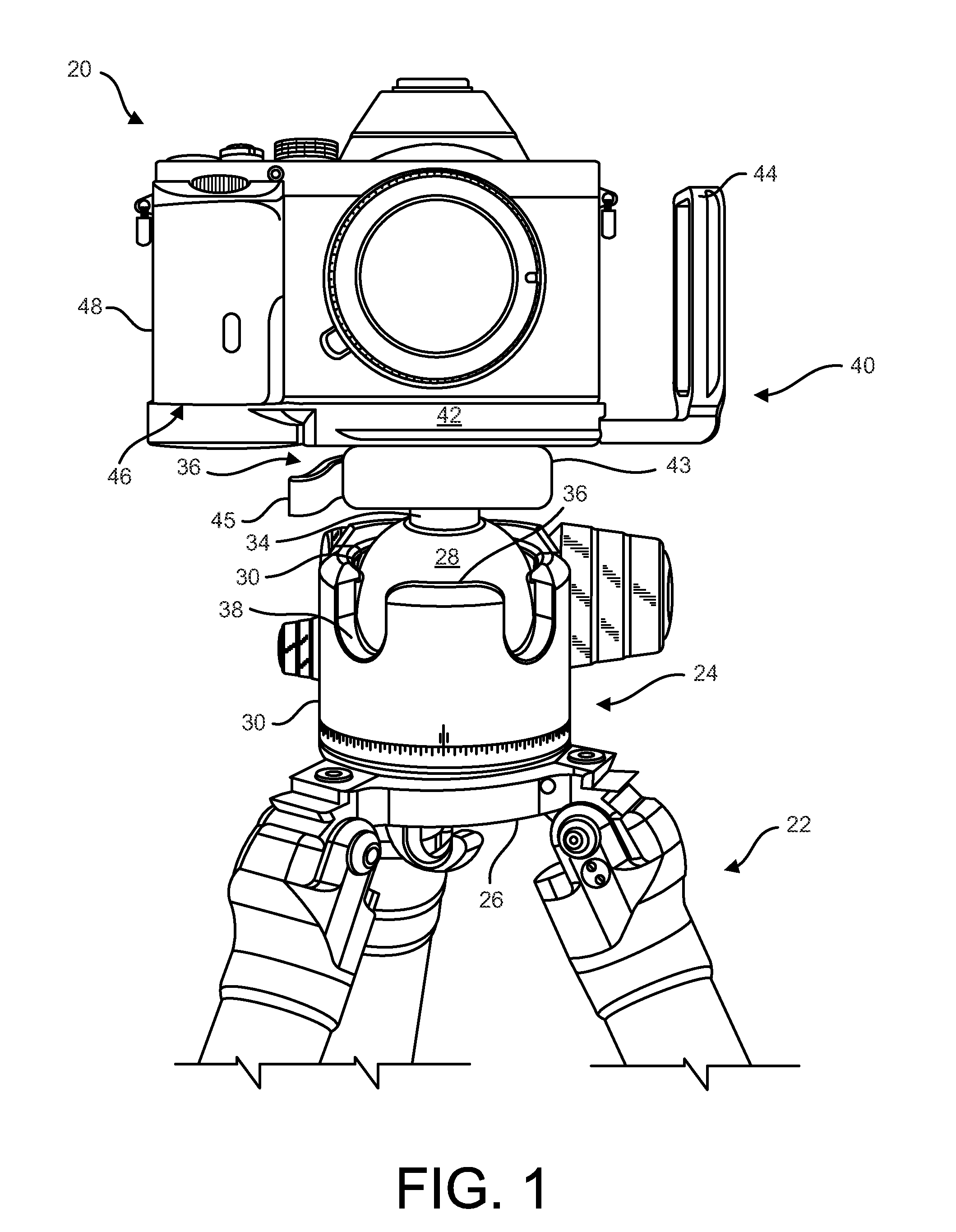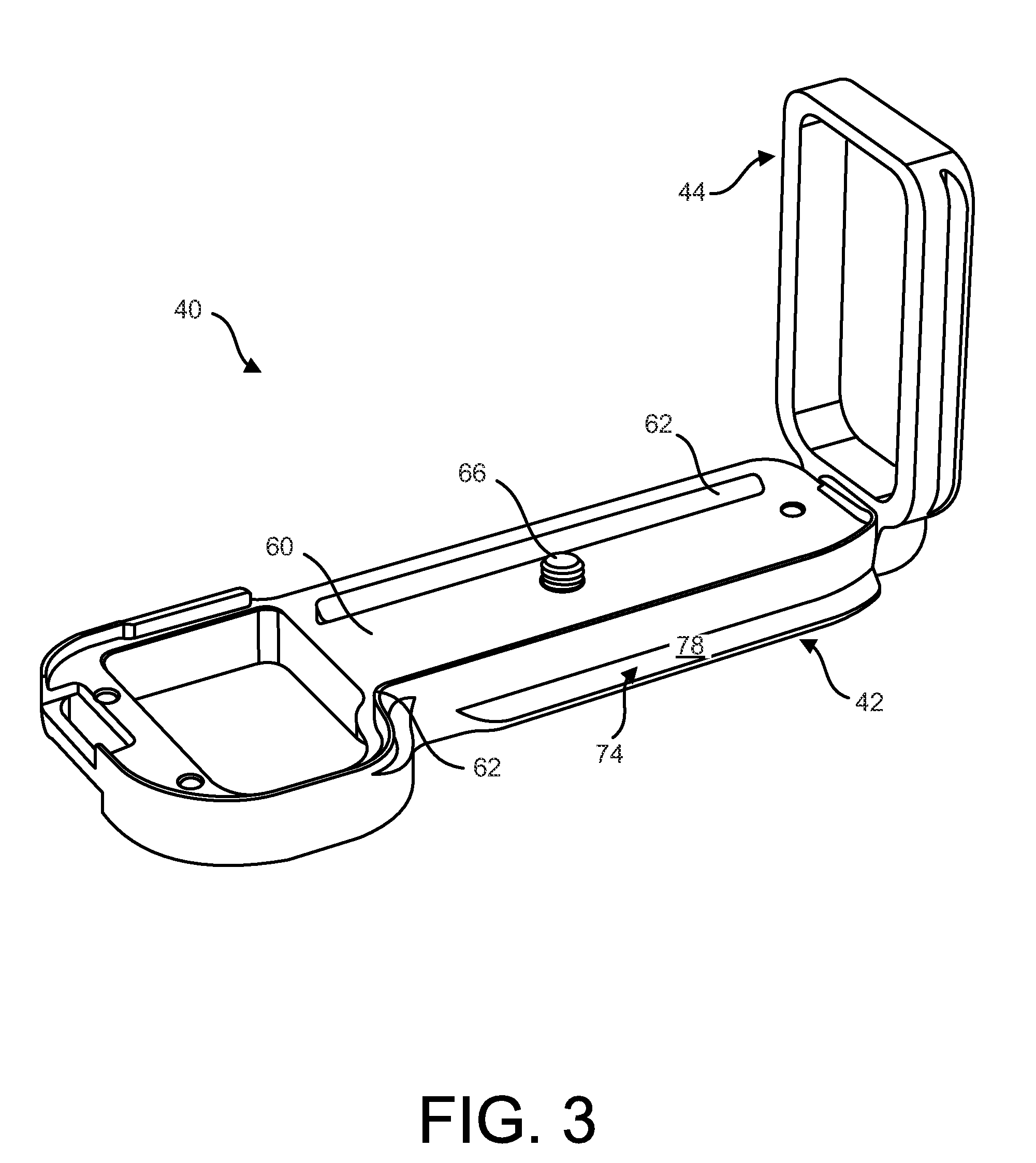Plate for camera equipment
a technology for camera equipment and brackets, applied in the field of brackets, can solve the problems of difficult use of viewfinders, difficult to change the orientation of camera equipment attached to a ballhead from landscape to portrait, and limited rotation in directions transverse to the axis of the stem
- Summary
- Abstract
- Description
- Claims
- Application Information
AI Technical Summary
Benefits of technology
Problems solved by technology
Method used
Image
Examples
Embodiment Construction
[0027]Referring in detail to the drawings where similar parts are identified by like reference numerals, and, more particularly to FIG. 1, to provide stability and to reduce blurring, photographic equipment 20, for example, a camera body 48, a lens and one or more accessories, is often affixed to a support, such as a tripod 22 or monopod. While camera equipment 20 can be attached directly to a tripod 22 or other support, cameras are commonly affixed to a support with an intermediate device, such as a ballhead 24, pan head or gimbal head which is usually secured to the head mount 26 of the support by a screw that projects upward through the head mount into threaded engagement with a threaded aperture in the body of the intermediate device. A ballhead 24 comprises generally a ball 28 which is retained in a socket 30 in the ballhead's body 32. The ball 28 typically includes a radially projecting stem 34 to which the photographic equipment or a receiver of a quick-release system is atta...
PUM
 Login to View More
Login to View More Abstract
Description
Claims
Application Information
 Login to View More
Login to View More - R&D
- Intellectual Property
- Life Sciences
- Materials
- Tech Scout
- Unparalleled Data Quality
- Higher Quality Content
- 60% Fewer Hallucinations
Browse by: Latest US Patents, China's latest patents, Technical Efficacy Thesaurus, Application Domain, Technology Topic, Popular Technical Reports.
© 2025 PatSnap. All rights reserved.Legal|Privacy policy|Modern Slavery Act Transparency Statement|Sitemap|About US| Contact US: help@patsnap.com



